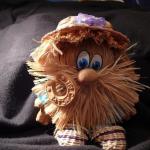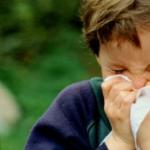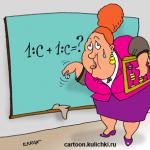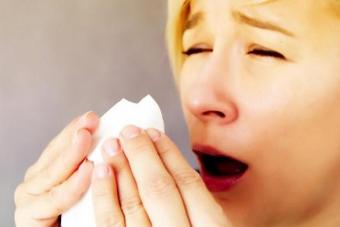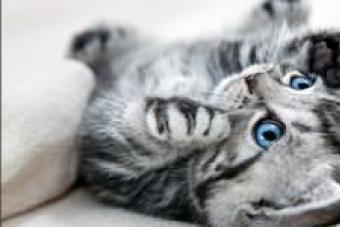Foreign Europe is considered one of the important regions in politics and the world economy. On this territory, world civilization was born, great discoveries were made, urban agglomerations were created, and industrial revolutions were carried out. This article will help you study in more detail the topic “Area of Foreign Europe”.
Territory
The area occupied by Foreign Europe is 5.4 million square kilometers (this does not include the CIS countries), a total of 10 million km2. According to data for 2013, 742.5 million people live here. The concept of “Foreign Europe” means 40 sovereign states that geographically belong to this continent.
The borders of Foreign Europe stretch from north to south for approximately 5 thousand kilometers, the extreme points being the island of Spitsbergen and the island of Crete. From west to east the distance is more than 3 thousand kilometers.
In the twentieth century, the political map of the region underwent repeated changes. There are several reasons for this:
- division of territory during the First and Second World Wars;
- unification of the Federal Republic of Germany and the German Democratic Republic;
- collapse of Yugoslavia, Czechoslovakia and the USSR.
The dividing line between Europe and Asia was also changing. Back in 1720, V.N. Tatishchev proposed establishing a border in the east along the ridge of the Ural Mountains, along the Yaik (Ural) River to the mouth flowing into the Caspian Sea. This division has become generally accepted.
TOP 4 articleswho are reading along with this
You can see who Europe borders on the map. In modern geography, the border runs:
– north – across the Arctic Ocean;
– west - across the Atlantic Ocean;
– south - these are the Mediterranean, Aegean, Marmara and Black Seas;
– East - the eastern foot of the Ural Mountains, through the Mugodzhary Mountains, along the Emba River to the Caspian Sea, then along the Kuma and Manych rivers to the mouth of the Don River.

Fig.1. Borders of Europe
Geographical position
Europe is located in the Northern Hemisphere, in the western part of the Eurasian continent. The relief is dominated by plains. The largest are the East European, Central European, Middle and Lower Danube Plains, as well as the Paris Basin.
European mountains are mostly medium in size and make up 17% of the territory. The main ones are the Alps, Carpathians, Pyrenees, Apennines, Caucasus, Ural, Crimean and Scandinavian mountains.

Fig.2. Physical map of the continent
Most countries have a coastal location. The coastline is too indented. The average distance from the sea is 300 km. European countries are located close to each other. Basically, the borders do not lie along natural boundaries, or there is a short distance that does not affect transport links. This neighboring location has a beneficial effect on integration processes.
Integration led to the creation of the European Economic Area among the 19 states that are members of the EEC. Within its borders, free movement of goods, capital, services, and people has been established, and a unified monetary system has been created. All this has a beneficial effect on the development of the countries’ economies.
The continent is also advantageously located in relation to other world regions, such as Africa and Asia. This makes it possible to establish transport links and trade. The wealth of natural resources provides the prerequisites for the development of industries and economics.
Political map of Europe
The largest countries in Foreign Europe by area are France, Spain, Germany and the Scandinavian countries.
Most countries are sovereign states. It consists of 34 republics and 14 monarchies.

Fig.3. Political map of Europe
The oldest republic in Europe is San Marino, which has existed since the 13th century. The Confederation of Switzerland appeared at the end of the 13th century.
In terms of population, France, Germany, Italy, and Great Britain are considered the largest. The G7 countries include Germany, France, Great Britain, and Italy. Germany is considered the country with a more developed economy.
What have we learned?
Europe, despite its small size compared to other continents, has the greatest cultural diversity. Due to its advantageous location, densely populated states are located here, in a small area, most of which have a high level of economic development.
Test on the topic
Evaluation of the report
Average rating: 4.7. Total ratings received: 278.
Europe Square - a fairly young square on the map of Moscow, which has nevertheless become one of the popular public spaces.
The square was erected in 2001-2002 as part of a Russian-Belgian project as a symbol of European unity. The central part of the square has a round shape and is limited by undulating granite structures, from the inside of which, as if in an amphitheater, step-like platforms descend to the center. Inside there is a huge fountain "The Rape of Europa" with an abstract sculpture of the same name in the middle of the bowl, and outside the granite circle there are 48 columns with flags of European states.
Fountain "The Rape of Europa"
The square was built according to the design of the chief architect of the Russian Academy of Sciences Yuri Platonov, however, the sculpture located in the fountain set the tone for the project.
"The Rape of Europa" - gift from Belgium to Moscow, work of a Belgian sculptor Olivier Strebel, depicting a mythical plot: the abduction of Europa, the daughter of the Greek king Agenor, by Zeus, who turned into a bull. Strebel decided to convey this plot with the help of elegantly intertwined metal pipes: in them he symbolically depicted the head of a giant bull and a woman in his horns. The height of the sculpture is 11 meters - it is the largest abstract sculpture in Moscow.
It was decided to install the sculpture before , however, the space of the square turned out to be too large for a relatively small object, and they decided to build an entire architectural ensemble around the “Rape of Europa” and place the sculpture itself in a huge fountain. The fountain, which took the name “The Rape of Europa,” is made in the form of 5 bowls, located one inside the other and cascading down from the sculpture. The outer diameter of the fountain bowl is 50 meters; jets erupt from 354 nozzles. To illuminate the composition, 1050 universal lamps and another 850 LED lamps are used, which provide dynamic illumination of water, jets and splashes. Thus, the fountain on Europe Square is the largest hydraulic structure with dynamic LED lighting in the world.
Today Europe Square, Despite its small scale on the map of Moscow, it has become one of the most popular public spaces in the city.
Located near , The Moscow River and the square with the fountain attract a diverse crowd: Muscovites and tourists visiting the city are happy to stop to rest on the stepped platforms and look at the large fountain with sculpture.
You can get to Europe Square on foot from the metro station. "Kyiv" Circle, Filevskaya and Arbatsko-Pokrovskaya lines.
The area of Europe is measured in different ways. This may be a geographical and political approach.
Borders
This is an important point for determining the area. There are several points of view on where the border between Europe and Asia is located. The area of each part of the world also depends on this. This is due to the fact that they are not separated by seas or other water areas, on the basis of which such large regions are usually divided. If in America it is easy to draw the border along the narrow Isthmus of Panama, and Africa is separated from Asia by the Suez Canal, then in the case of Europe and Asia this is not so easy.
Most often, the formal section takes place along the Ural Mountains, the river of the same name, as well as along the coast of the Caspian Sea. The borders in the Caucasus are even more diverse, so most often they use the formal border between Russia and the Transcaucasian republics. The strait separating the Black Sea and the Mediterranean (as well as the Sea of Marmara) is the geographical boundary between the two parts of the world. Therefore, Turkey, which is located not only in Asia, but also in the European province of Thrace, often refers to both the countries of the West and the countries of the East. Here we can also add Russia and Kazakhstan, part of whose territory is located in the Old World. There are many symbols located on the imaginary border, for example, there are such in different Ural cities: obelisks, steles and signs.
The largest and smallest countries
The area of Europe consists of many states. Of course, the largest is Russia. Out of 17 million sq. km² 3,783 thousand sq. km² are located precisely in the Old World, that is, to the west of the Ural Mountains. The countries of Europe do not differ much from each other in area, and usually fluctuate in small numbers. Of the countries that are entirely in Europe, the largest is Ukraine, followed by France, Spain, Sweden, Norway, Kazakhstan (just west of the Ural River), Germany, Finland and Poland. Interestingly, the Scandinavian countries are among the largest in Europe, but their population is significantly smaller than those states located further south. Of course, this is due to natural and climatic conditions.
Another category of states is dwarfs, which exist for historical and regional reasons. These are the Vatican, San Marino, Andorra, Liechtenstein and Luxembourg. This is Europe. The total area of the “dwarfs” is not even a percentage of large states.
Records

The area of Europe in km is 10 million square meters. km². It is divided into several parts. The largest of them is Eastern (4 million 593 thousand sq. km²). This is the European part of Russia, Belarus and Ukraine. The largest peninsula is the Iberian Peninsula (800 thousand sq. km²). This is the western tip of the mainland and is home to Spain and Portugal. Europe is not only located on the mainland. The largest island is Great Britain (229 thousand sq. km²).
Climatic features

The area of Europe can be divided into several climatic and geographical regions. This includes the Arctic tundra in northern Scandinavia and the islands of the Arctic Ocean. To the south it gives way to taiga, mixed, broad-leaved forests, forest-steppes and steppes. Subtropics and semi-deserts are located on the outskirts, for example, in the area between the Volga and Ural rivers in Kazakhstan. Sometimes some areas of the Iberian Peninsula and Kalmykia are classified as this geographical type. Most often, desertification occurred due to excessive human economic activity.
Regions

The area of Europe is divided into several cultural and religious parts. The Balkans are located in the southeast and belong to the peninsula of the same name and mountains. One of the greatest civilizations of antiquity was born here. Ancient Greece became the birthplace of many human achievements in science and culture. In general, the entire Mediterranean coastline is most adapted to human life. The coastline is significantly indented. Roman civilization arose on the Apennine Peninsula. Nowadays Italians live there and the world center of Catholicism is located there. The Perinean Peninsula became the home of the Spaniards and Portuguese. In the Middle Ages, these lands were under the control of Muslims - Arabs and Berbers. Because of this, a unique culture and ethnic group emerged there.
Western Europe also includes France, Germany, Great Britain, Ireland, the Benelux countries, as well as the Alpine states of Austria and Switzerland. There is a high standard of living and rich infrastructure. To the east of them are the Slavic countries: Poland, the Czech Republic, Slovakia, Belarus, Ukraine and Russia. Southern Slavs live in the Balkans. The Baltic Sea cuts deeply into mainland Europe to the north. In addition to those listed, it is adjacent to the Baltic countries: Estonia, Latvia and Lithuania. The Scandinavian Peninsula to the north of this sea is home to Norway, Sweden and Finland. In a cultural and national sense, they include Denmark, a small monarchy north of Germany.
Europe is a part of the world that is part of the Eurasian continent. On its territory there are 54 states, most of which have a relatively small area. This part of the world consists not only of continental countries, but also of islands. About a quarter of its territory is located on peninsulas, including the Balkan, Scandinavian, Kola, Apennine and others.
To correctly determine the area of Europe, we must take into account that the border between Europe and Asia runs along the Caucasus ridge, although this division is arbitrary. Despite the fact that Armenia and Azerbaijan are difficult to territorially classify as this part of the world, they are still included in it due to political, moral and ethical considerations.
Total area of Europe
If we take into account all the territories that today belong to Europe, then its area is 10,180,000 km², of which 720 thousand km² are islands. The largest state is Russia, although it is partly located in Asia. The second and third countries by area are Ukraine and France, respectively, with a difference of 30 thousand km². It should be noted that the current political situation between Russia and Ukraine may lead to the territory of the Crimean Peninsula being transferred to the former. In this case, the area of France and Ukraine will become almost the same, with a difference of only 3 thousand km², although this will not affect the area of Europe in any way.
Political division
Conventionally, the area is divided into three parts: Eastern, Western and Central. Previously it was exclusively political in nature, but now geographical location is also taken into account.

Which include Austria, Great Britain, Germany, France and Switzerland. The majority of the Eastern part includes such states as Russia, Belarus, Bulgaria, Ukraine and others. The states of Central Europe play a very important role in the political arena, and they include Croatia, Slovenia, Poland, and Slovakia.
Historical state
Previously, such sovereign states as Macedonia, Slovenia, Croatia, Serbia, Bosnia and Herzegovina, Montenegro were the territory of one country - Yugoslavia, which collapsed in 2006. Before its dissolution, Yugoslavia was one of the largest countries in Europe, and its territory was 255 thousand km².
Dwarf states
In this part of the world there are also a number of dwarf states, which, although small in area, play important roles in political relations.

The smallest of these countries and at the same time the most influential is the Vatican. This city-state is an Italian enclave located in Rome. Although the independence of the Vatican is supported by all of Europe, the territory of this state is only 0.44 km². Other dwarf countries in this part of the world include San Marino, Monaco, Malta, Liechtenstein and Andorra.
To summarize, it should be noted that the area of Europe was constantly changing in connection with events that affected the political picture of the world. However, it has always remained one of the largest and most significant parts of the world.
Europe Square on the mapEurope Square in Moscow is located on the banks of the Moskva River, not far from the Kievsky railway station and the Kyiv metro station, between Berezhkovskaya embankment, Kievsky railway station and Kievsky (Borodinsky) square.

Fountain "The Rape of Europe" and Kyiv Station
The square was founded on City Day in September 2001 and inaugurated on September 15, 2002. The construction of Europe Square was a joint Russian-Belgian project and was a symbol of Russia's desire to expand ties with the European Community. This commitment is emphasized by the installation of 48 columns topped with European flags.
At that time there was euphoria about rapprochement with the West in general and with Europe in particular. However, then “something went wrong”, relations gradually cooled, and after the “Crimea” they developed into outright hostility.
However, the square has not yet been renamed, although there have already been attempts to do so.

This is what Europe Square looks like from the nearby Bogdan Khmelnitsky Bridge, on the left is the Evropeisky shopping center.

The central object of the square is a fountain with a sculpture by the Belgian sculptor Olivier Strebel “The Rape of Europa”. This is the largest abstract sculptural structure in Moscow.
The abstract sculpture emphasizes the “Europeanness” of the square. It’s now fashionable to put some kind of squiggle there and just guess what it is. But in this case, they condescended to Russian poskonnost and gave the sculpture a name.
The plot of the sculpture is taken from ancient Greek mythology and belongs to one of the most popular subjects of world art associated with ancient culture. Zeus fell in love with Europa, the daughter of the Phoenician king Agenor, and appeared to the princess and her friends, who were walking on the seashore, in the form of a beautiful bull. The girls had fun playing with the bull, decorating its horns with flower garlands. When Europe decided to sit on the back of a bull, it rushed into the sea and took the princess to the island of Crete, where she became the wife of Zeus, subsequently giving birth to three hero sons.
From Wikipedia.

 Valentin Serov "The Rape of Europe"
Valentin Serov "The Rape of Europe"
Various painters have written countless paintings on this subject. For comparison, I took a painting by the Russian artist Valentin Serov, not for patriotic reasons, but because in it the bull’s horns are long and at least somehow correspond to the sculpture. As for the girl, I was unable to see any resemblance of her.
In general, the whole composition reminds me more of a large bird.
Due to the sharp cooling of relations with Europe, there was a proposal from our ultra-patriots: to rename the square something patriotic, and in the place of the “abstract monster” to put the then restless Prince Vladimir. However, the prince seemed to have found peace and the wave died down. For how long - God knows

On the Square of Europe - European ease. Ease is not in the sense that you can throw cigarette butts and beer cans anywhere, but in the sense that you can lie in a public place.

One of the emblems of the European Union on Europe Square. It seems to be against the backdrop of the globe (albeit an abstract one). On the Soviet coat of arms, the symbol of communism - the hammer and sickle - was also depicted against the background of the globe. Interesting parallels.

Kievsky railway station building

The figures on the pediment of the station were originally there, but the mosaic St. George the Victorious appeared in the modern era; earlier there was the coat of arms of the USSR, also in mosaic

The figures of workers from the Soviet era were still preserved. Although I would replace them with an official and an oligarch, they can be depicted abstractly, according to modern fashion. Each era must have its own symbols.
 Four-star hotel and business center "Radisson Slavyanskaya" Radisson Slavyanskaya Hotel and Business Center, Moscow is located next to Europe Square. The hotel features first-class amenities, a free fitness center and 3 international restaurants. There are more than 20 boutiques and shops on site. The hotel has 8 levels (2 underground and 6 above ground), as well as parking for 1,200 cars.
Four-star hotel and business center "Radisson Slavyanskaya" Radisson Slavyanskaya Hotel and Business Center, Moscow is located next to Europe Square. The hotel features first-class amenities, a free fitness center and 3 international restaurants. There are more than 20 boutiques and shops on site. The hotel has 8 levels (2 underground and 6 above ground), as well as parking for 1,200 cars.

Shopping and entertainment center "European" The building of the center is built like a Russian shopping arcade. Internal wide shopping “streets” radiate from the central atrium “Moscow” to the atriums “Paris”, “Rome”, “London” and “Berlin”, the design of which is made in accordance with the architectural styles of the famous capitals of Europe.
 Trade and office center "Kitezh"
Trade and office center "Kitezh"
This unusual building near the Kievsky railway station is called by many a ship, an iceberg, romantics - an intergalactic ship from Star Wars, and jokers - an iron.
What makes it unusual is its upwardly expanding architecture - this layout allows you to fit the maximum amount of space into a small building area. And of course, the façade is made of glass and concrete.
The name “Kitezh” was transferred to the center from the Central Asian market that previously stood on this site.

Pedestrian bridge named after Bogdan Khmelnitsky across the Moscow River The Bogdan Khmelnitsky Bridge (Kiev Pedestrian Bridge) is a steel arched pedestrian bridge across the Moscow River. Connects Berezhkovskaya and Rostov embankments. The bridge arch is completely covered with a glass cap. It produces the same unusual impression as the Kitezh shopping center.
The bridge was put into operation on September 2, 2001. In 2004, it was renamed the Bogdan Khmelnitsky Bridge as a sign of the eternal friendship of the Russian and Ukrainian brother nations. :(:(:( .

This is what the bridge looks like inside
